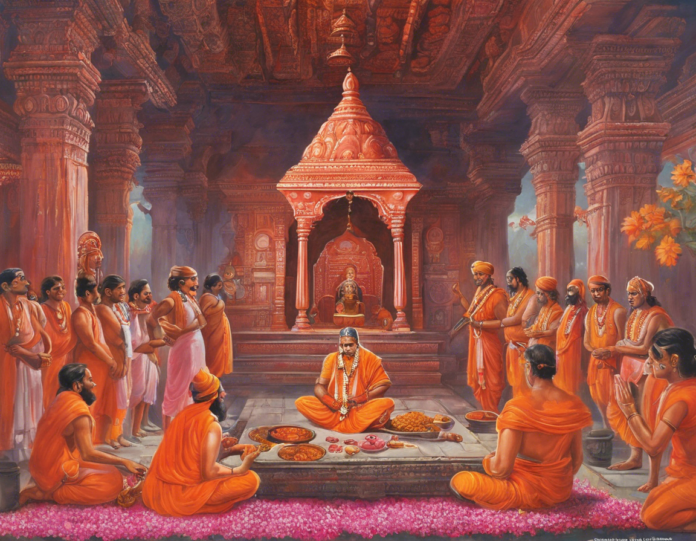Ram Mandir Pran Pratishtha ceremony at Ayodhya is a momentous occasion in Hindu mythology and history. The much-awaited event is of great significance for millions of devotees worldwide as it marks the consecration of the grand Ram Mandir in Ayodhya. The Pran Pratishtha ceremony is the consecration of the idols of Lord Ram, Goddess Sita, Lakshman, and Lord Hanuman, thereby infusing the deity into the temple. This ancient ritual involves elaborate Vedic ceremonies and is believed to breathe life into the deity residing in the temple.
Timeline of the Ceremony
The timings for the Ram Mandir Pran Pratishtha ceremony in Ayodhya are meticulously planned to align with the auspicious planetary positions and the Hindu almanac. The ceremony extends over several days and is segregated into various rituals and processes. Here is a brief overview of what you can expect during the Pran Pratishtha ceremony:
1. Kalash Yatra
– The Kalash Yatra marks the beginning of the Pran Pratishtha ceremony.
– Devotees carry holy water in pots on their heads, marching towards the temple amidst Vedic chants and hymns.
2. Bhoomi Poojan
– The Bhoomi Poojan is performed to seek blessings from the earth before commencing any construction.
– It involves worshiping the land and seeking permission from Mother Earth to build the temple.
3. Gauri Ganesh Puja
– Before starting any auspicious endeavor, Lord Ganesha is worshipped to remove obstacles and seek prosperity.
– Goddess Gauri, a symbol of strength and power, is also revered during this ceremony.
4. Pran Pratishtha
– The central aspect of the ceremony involves invoking the deity into the idols through sacred mantras and rituals.
– This process is believed to establish a spiritual connection between the devotees and the deity.
5. Hawan
– The Hawan is a sacred fire ritual where offerings are made to the fire while chanting Vedic hymns.
– It symbolizes purification and the offering of prayers to the Gods and Goddesses.
6. Aarti and Bhajans
– The ceremony culminates in the offering of Aarti to the deities, accompanied by devotional songs and hymns.
– The devotees participate in the Aarti with fervor and devotion, seeking blessings from the divine.
7. Prasad Distribution
– The ceremony concludes with the distribution of Prasad, a blessed food offering, to the devotees.
– It symbolizes the grace and blessings of the deity upon the devotees.
Frequently Asked Questions (FAQs)
1. What is the significance of the Ram Mandir Pran Pratishtha ceremony?
The Pran Pratishtha ceremony is a sacred ritual that infuses life force into the idols of the deities, establishing a divine connection between the devotees and the deity.
2. How long does the Pran Pratishtha ceremony at Ram Mandir last?
The ceremony at Ram Mandir typically lasts for several days, encompassing various rituals and processes to consecrate the temple and invoke the deity.
3. Can devotees participate in the Pran Pratishtha ceremony at Ram Mandir?
While the Pran Pratishtha ceremony is primarily conducted by priests and spiritual leaders, devotees can witness the rituals and seek blessings from a distance.
4. What preparations are made for the Pran Pratishtha ceremony at Ram Mandir?
Preparations for the ceremony include meticulous planning of the rituals, arrangement of offerings, decoration of the temple, and coordination of priests and volunteers.
5. Are there any specific dress codes or guidelines for attending the Pran Pratishtha ceremony at Ram Mandir?
While there may not be strict dress codes, it is advisable to dress modestly and respectfully while attending the sacred ceremony at Ram Mandir.
In conclusion, the Ram Mandir Pran Pratishtha ceremony is a divine and sacred event that holds immense significance for devotees. The meticulous planning, elaborate rituals, and devout participation mark this occasion as a moment of spiritual transcendence and divine connection for all those involved. The ceremony at Ram Mandir is not just a ritual; it is a celebration of faith, devotion, and the manifestation of ancient traditions and beliefs.








